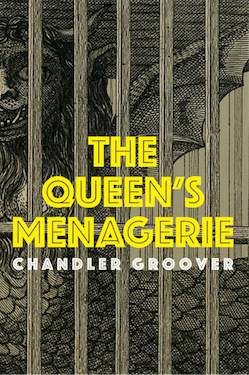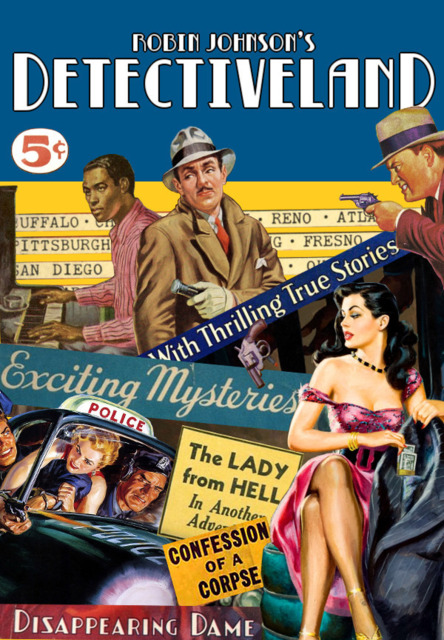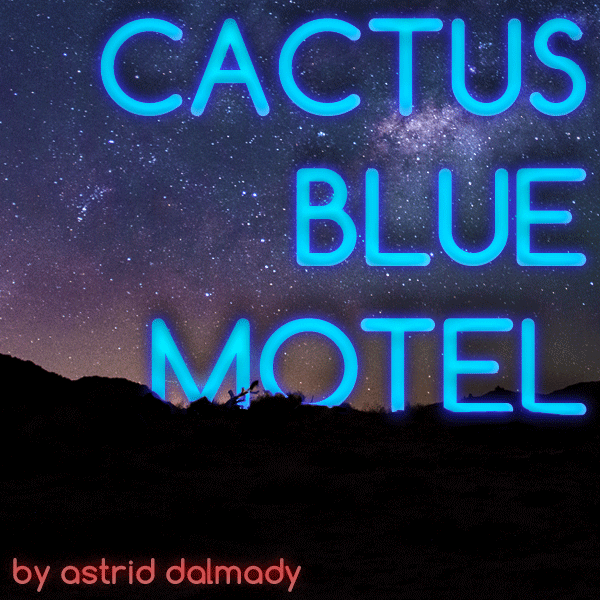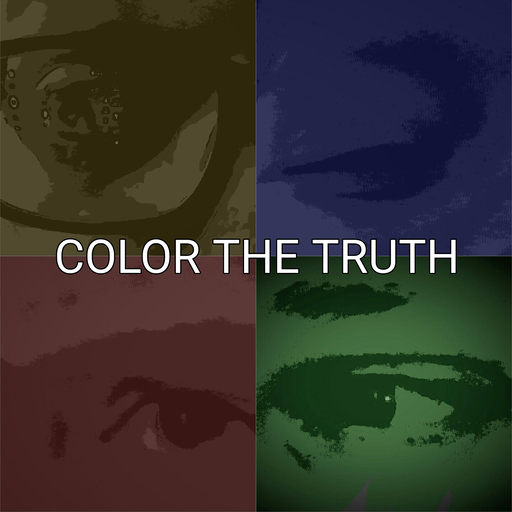
Disclosure note: Bruno Dias has been in the IF community for going on two years now, and as a result he’s known most of the people quoted or mentioned in this piece in some capacity or another, including a few people that he considers friends.
The Interactive Fiction Competition, now in its 22nd year, is exactly what the name implies, an early showing and competition of interactive fiction; games that approximate literature and literature that approximates games. In a lot of ways, the Comp is one of the most venerable events in gaming that still goes on. It’s five years older than the the IGF, for example.
This article is something a little bit new for the Comp, too. For the first 21 years of its existence, Comp participants weren’t allowed to publicly discuss their games. In 2016, experimentally and for the first time, that rule is being lifted. I’ve talked to the authors of some of this year’s games to get their perspectives on their own work.
I’ve also talked to Jason McIntosh, the competition’s organizer since 2014, about it. “I see IFComp as a vital community heartbeat that, once every year at a predictable time, pumps dozens of fresh new examples of IF into the world. It’s obviously not the only source of new IF, but it is arguably the most reliable one. It sets up a repeating months-long cycle of creation, anticipation, play, discussion and reflection that has for many years played a central role in the IF community--and thus to the continuing growth and development of IF itself.” The Competition has been on an upswing of late--this year has more entries than ever in the Comp’s 22-year history, and last year broke a record for the total number of competition judge ballots cast.
Here's a brief look at some of the entries that stood out in this year's competition.
The Queen’s Menagerie / Mirror and Queen (Chandler Groover)

Groover writes reliably creepy prose set in fantastical worlds with a tinge of the morbid. The Queen’s Menagerie is the story of the titular Queen’s zookeeper, tasked with feeding and keeping her collection of mythical beasts. Mirror and Queen is about another Queen entirely, and her choice to have Snow White killed.
Part of the appeal here is in the user interface; Menagerie presents a list of words that you can drag onto the text to advance the story and make choices. Meanwhile Mirror and Queen lets you type keywords to get the mirror’s response to the queen’s thoughts. They’re actually very different pieces. “In a certain sense I view them as opposites. Mirror and Queen is intimate; you never escape the queen’s thoughts,” says Groover. “In Menagerie you only see the queen at a distance, from your position far down the social ladder, yet everything traces back to her.”
In Menagerie, you’re mainly choosing how to allocate the morsels of food you have for the different beasts; and in the process getting to know them, and their appetites, and perhaps a bit about the luckless (or fortunate, depending on how you look at it) man whose job it is to feed the Queen’s monsters. It was built using Texture, a new engine for interactive fiction stories with a novel interface built specifically for tablets and mobiles; instead of clicking or tapping like one would in a traditional hypertext story, you’re presented with a list of words that can be dragged onto the main text to combine them. “I wanted to write something where the drag-and-drop mechanic represented what was happening in the story. You pick up a key and put it into a lock. You pick up an animal and put it into a monster’s mouth. This mechanic requires more effort than clicking hyperlinks, so the trick is to write something where it serves a narrative purpose. I’m always returning to consumption as a theme, and I love fantasy and monsters, but I probably wouldn’t have made this particular game without a tool like Texture.”
Mirror, meanwhile, gives you only a limited number of queries you can make to the titular mirror. So, in aggregate, it’s actively asking you what matters most in the story. “One big reason Mirror and Queen has a turn limit is because the queen is speaking to her mirror on borrowed time," says Groover. "She bought this interview with a blood sacrifice, and the blood won’t last forever.”
Detectiveland (Robin Johnson)

In 1978, right at the dawn of personal computing, Scott Adams (no relation to Dilbert creator and snake-owning-its-own-tail-forever Scott Adams) started selling what was effectively the first commercial “text adventure” for widely available computers, Adventureland. By the standards of only a few years later when Infocom started releasing classics like Zork, Adventureland was painfully simplistic. Text adventures (and its descendants, parser fiction) typically takes place on a map of discrete “rooms” connected to one another by exits; players interact by typing commands. Adventureland’s first room reads simply:
Forest
You’re in a forest.
Robin Johnson has taken this template of extremely pared-down prose and interaction, replaced the parser interface with a modern point-and-click one, and used it as a springboard for cutting direct genre pastiche. “I first had the idea when playing Adams games on my smartphone,” says Johnson, “because everything seemed to fit nicely in the small screen except the need to type.”
The result was Draculaland, released last year, a fairly silly romp through vampire tropes as filtered through Hammer Horror movies. Detectiveland refines the interface and expands the prose: “I moved away from the ultra-terse style in the dialogue and cutscenes, so I got to focus my creative writing there rather than on room and item descriptions.”
What I love about Detectiveland is its commitment to videogameness. It revels in being a little hokey, throwing in gags about 1920s gender roles, mafia stereotypes, speakeasies, and even a reclusive horror writer who is clearly a massive racist.
This one includes traditional adventure game puzzles that are unfailingly amusing and well-constructed, operating well in that LucasArts realm of quasi-logic. Johnson: “I also wanted to make parser-style puzzles with a keyboardless interface. The old problem there is, how do you get the player to think creatively when they can see the available choices? Draculaland hid some of the available choices by having some of them visible depending on context like what items you have in your inventory, and Detectiveland added the "holding" mechanic to hide them further.”
Cactus Blue Motel (Astrid Dalmady)

Twine is at this point probably the interactive fiction format most people will be familiar with, and Cactus Blue Motel is a great example of that form. It’s a magical realist story about the end of adolescence, feeling unmoored from a longtime group of friends, and the uncanny feeling of being in a strange place with a group of people you think you know very well. Dalmady describes the aesthetic she was thinking of as “American Southwest Motel Spirited Away.” “I wanted to capture that atmosphere of another world that isn't exactly malevolent, but isn't super welcoming either. [...] As a kid, I read a lot (A LOT) of Goosebumps, which is all about the weird and scary entering the world as we know it. I followed that up with some J.K. Rowling, some Neil Gaiman and Neal Shusterman. There's also a huge literary tradition towards magical realism in Latin America, and while I never took to Isabel Allende the way I did to R.L. Stine, I can't deny that growing up surrounded by that influenced my writing.” All those influences definitely show, and it’s very satisfying for me to read an interactive synthesis of a genre I’m personally very fond of.
And even though it’s situated well within certain genre traditions, it has a lot of specificity. I adore a lot of the imagery here, and in many ways it’s dodging a lot of the expected patterns for those kinds of coming-of-age stories. “I'd be lying if a lot of Cactus Blue didn't come out of spite. I never did a road trip with friends the way the girls in Cactus Blue did, but what was worse for me was that I never read about it. With the exception of Spirited Away, and a few of the Goosebumps novels, it was almost always boys having the adventures. The classic road-trip canon is all men taking to the road and finding themselves, with not a lot left for a young teenage girl who might want to feel that same sense of adventure.”
It’s also a more exploration-driven game than the other ones in this list; over the course of the story, the motel can be explored several times in different lights and impressions. “Twine especially adds a visual element by letting you map out the story and choice points in a node-map, so when I start, I tend to think a lot about the shape a story will take: where I will put the choices that branch things out dramatically, which choices will just link back to the story quickly.”
16 Ways to Kill a Vampire at McDonalds (Abigail Corfman)

The joke here is exactly what it says on the tin: There’s only one puzzle and there’s over a dozen ways to solve it, including a few endings that don’t result in killing the vampire. Part of why this works is that nothing is off the table--most vampire fiction doesn’t actually run with the idea that every commonly-cited vampire weakness is a thing, but this actually commits fully. Adventure game puzzles have a tendency to be frustrating, often because the solution is too specific and obscure or because they don’t really have a lot of internal logic. 16 Ways cleverly sidesteps both those problems by having a single multifarious puzzle and by using a resonant idea (vampire folklore) to logically ground the puzzle in a clear set of causes and effects. According to Corfman, “I wanted to avoid people getting stuck--hitting a brick wall is the most frustrating experience in a puzzle game. To that end I tried to always keep the story flowing. Almost everything you do in 16W2KaV@McD gets you closer to a win condition (or death).”
Color the Truth (Brian Rushton)

I took a cursory run of the parser games in this year’s Comp, and of the more traditional parser games, Color the Truth seems like the best candidate as an introduction to the subgenre. While it features puzzles, it relies on a specific puzzle mechanic. Detective stories have been used a lot in adventure gaming and IF, but Color the Truth gets a lot of mileage by keeping the focus tight: It’s a game about interrogation. You take statements from witnesses, ask them questions, and try to catch them in contradictions that gradually unveil what really happened.
The appeal here is definitely in the satisfying conversation mechanics, but it’s elevated by some details in the execution. The witnesses’ stories are told through interactive flashbacks where you play as those characters. They all take place in the same building, but the game goes the extra length of having five different versions of the same places which reflect the specific perceptions of individual characters. Rushton says this structure was a happy accident. “In the original version, the stories all took place in different settings. [...] When I was writing her jealous sister's story, I had the idea of making her house a complete mirror image of Rosalita's house, but older and lower quality. Every item description in the sister's house mentioned how Rosalita's house was better. I later rewrote the game, halfway through development, due to some feedback on my setting and characters. I decided to take the 'mirror image' idea and run with it by putting everyone in the same setting with different perspectives.”
This is one of those obligatory moments that highlight the particularities of IF; while a graphical game could have a similar structure, prose makes it very easy for the different flashbacks to really evince different attitudes and perceptions for each character, by varying what the text focuses on and how it describes everything. It’s really interesting, in a game, to play the same exchange from both perspectives. “[around IFComp last year], I did a speed-IF where I treated thoughts or topics like physical items, with an inventory of thoughts and basic 'give' and 'examine' commands. I liked the idea, but Emily Short and Chandler Groover thought the system needed something more interesting; Chandler suggested some kind of 'linking' of topics. I wanted to make a bigger game with these linkages to prove the system could work. So the two games fell together into one, and it all clicked. I could use the linkages to connect these Rashomon-like stories to each other, and force characters to change their stories.” According to Rushton, the game originally featured that linking mechanic much less, but eventually it became central to the design.
This is really just a sample, and there’s a lot more in IFComp--about 50 more games. You can see the full list on the competition website. Voting, for judges, is open until November 16th.
Bruno Dias is a game developer and writer based in São Paulo, Brazil. He writes interactive fiction and develops tools for doing so. His work can be found on Sub-Q Magazine and on his blog. He himself can often be found on Twitter.